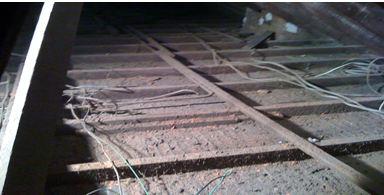
If you live in an older house, chances are that over the decades, dust has accumulated in your ceiling cavity.
There’s also a good chance that this dust contains lead.
Lead in ceiling dust can come from various sources, including:
- petrol exhaust emissions
- wood or coal burning fallout
- detritus from old renovations (for instance the removal of lead-based paint)
- industrial debris from power stations, incinerators, and other sources
As you may know, even small concentrations of lead can be dangerous, especially to young children.
So what should you do about possible lead dust in your ceiling?
Get a lead sample tested
If you suspect there might be lead in your ceiling dust, a good first step is to get a sample tested to find out if lead is present, and if so, in what concentration.
Airsafe offers NATA accredited testing for lead. Find out how to get a sample tested.
If we do find lead, we’ll give you sound advice about what to do next.
Lead dust may not pose a risk
Just because you have lead dust in your ceiling, that doesn’t necessarily mean it’s posing a risk to your family. There are two situations, however, where you do need to take action:
- If you’re planning renovations that will disturb the ceiling dust, like adding an extension or skylight
- If there’s a chance dust might be leaking from your ceiling
If you need ceiling dust removed
If you do need to remove dust from your ceiling, we strongly advise you against doing it yourself.
Instead, give Airsafe a call on (02) 9555 9034. We’ll recommend a professional dust removalist who will take the proper precautions, including HEPA air filtration, and safe entry and exit to the ceiling that avoids further contamination.
Don’t put your children at risk: if you think you might be dealing with lead, get expert advice.



